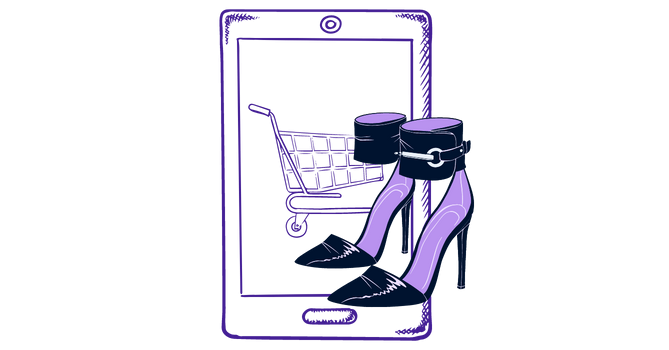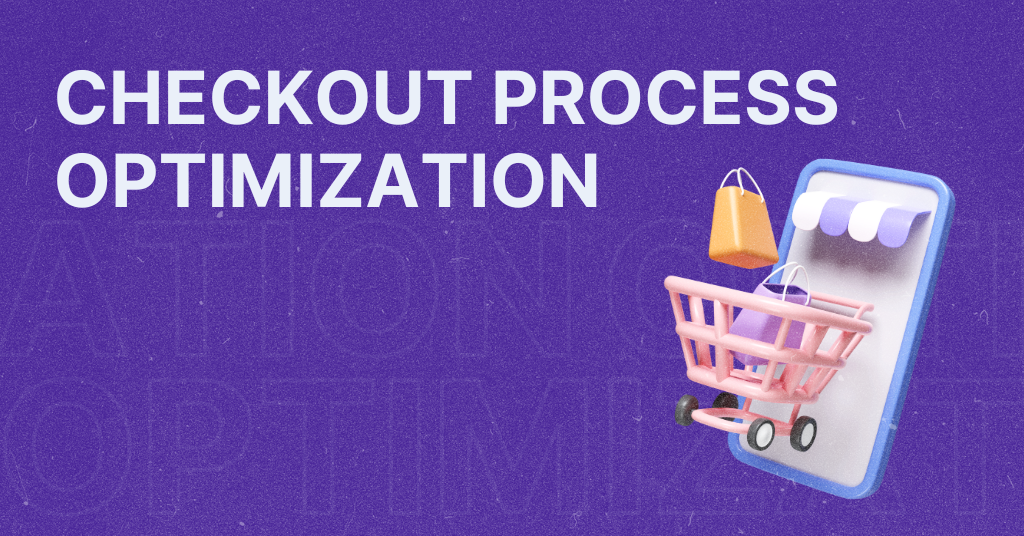
How big brands transformed their business with mobile shopping apps
More and more, consumers are turning to branded mobile apps to research, find, and purchase the products they need. Up to 89 percent of shoppers use mobile retail apps rather than browsing mobile websites, and for the past several years, apps account for 70 percent of mobile e-commerce transactions in North America.
The path to purchase plays an essential role in driving conversions and boosting revenue, even for businesses with the best products on the market. App users view 4.2x more products per session than mobile web users and are 3x more likely to convert. It gives shop owners a head start over the competitors, but there are still many ways conversion rates can be optimized for maximum profit. Transferring focus on conversion rates can help streamline the user journey, give the users the best possible in-app experience, and capitalize on every opportunity to increase revenue.
Good practice examples
This guide shows you an example of how well-known online brands transformed their business thanks to mobile apps. We will also share best practices for optimizing conversion rates.
1. How ASOS got 58 percent of customers to buy on mobile
ASOS is one of the leading online fashion stores globally and among the top five online stores in the clothing and shoe segments in the United Kingdom (UK), where they are based. ASOS, short for ‘As Seen On Screen,’ distinguishes itself by its business model: the retailer is strictly online-only and caters mainly to a global audience of 20-somethings. The brand offers low-cost clothes that look like they came straight off the catwalk.
To optimize their customers’ mobile experience, ASOS developed several tools for their mobile shopping app based on personalization and recommendation. The in-app Fit Assistant recommends sizes for products people are browsing based on past purchases, similar shoppers, or buyers’ details, such as height and weight.
Through the Style Match tool in ASOS mobile shopping app, users can upload a photo (from Instagram, fashion magazines, etc.), and the app provides the best matches from its database of products.
ASOS technology team started with solving customer pain points when figuring out how to improve the mobile app. The brand has an inventory of 85,000 products from 200 brands. While scrolling through endless product pages is suitable for desktop, it is difficult to digest on mobile. It can be extremely frustrating, so the team was looking for a way to remove the friction.
Investing in visual search options proved like a smart step. Visual product search technology allows anyone with a smartphone to take a photo of a product and immediately identify brand details and connect to e-commerce sites. Just like Shazam helps users identify a song playing at a restaurant, visual search can get through data to locate the maker of a jacket worn by someone on the subway or a pair of boots spotted on an advertisement on the bus stop.
The majority of ASOS’s traffic and conversions come from the mobile app – 70 percent of traffic and 58 percent of purchases globally, up to 80 percent of traffic, and 70 percent of conversions in the UK.
The brand recognized the fact that most of the customers have their entire lives in their mobile devices. They optimized the mobile app to capitalize on that fact by providing a user experience that matches the user’s lifestyle and removes the pain points.
2. How Urban Outfitters increased customer conversions by 75 percent
Modern marketers gather a vast amount of customer data to create relevant and appealing campaigns and contextualize experience customers have with their brand. Understanding the users’ behaviors, habits, and preferences makes it possible to provide them with messages and experiences that create long-term customer loyalty.
Innovation is critical, especially if millennials are the target audience of a brand. Just having a mobile strategy is nowhere near enough. Urban Outfitters, a Philadelphia-based lifestyle retailer, recognized this, and they certainly go beyond the basics to attract the demographic focused on digital.
Using the location and activity data to support the smarter delivery of messaging, they created a 75 percent increase in customer conversions and a 146 percent increase in average revenue per recipient. Based on this data, they send contextual messages to customers. For example, if a customer has visited a nightclub, the app sends them promotions for party dresses and clutch bags.
This example shows how insights from location data are incredibly versatile. Understanding how target audiences interact with the real world and their affinities visiting locations and watching TV shows, they can make better decisions across their entire marketing lifecycle. When brands take advantage of behavioral data to make the messaging more appealing, different messaging channels, such as push notification, email, and in-app messaging, can be a part of a cohesive strategy.

The best practices for optimizing mobile commerce apps to increase sales
The fact is that mobile commerce has expanded in the last decade. So how did these mobile apps get such a considerable following, and why are companies investing in mobile apps? There are several reasons:
- Mobile apps can provide better user experience;
- Brands have a new marketing channel;
- They allow tracking user behavior through analytics;
- Brands can offer customers a personalized experience and product recommendations;
- Direct communication with users is accessible through push notifications;
- Data from analytics allow a high level of personalization.
As the use of mobile commerce solutions increases continuously, consumer expectations about quality and user experience are escalating. Mobile commerce has moved beyond just creating an application to creating services that wholesomely improve the customers’ shopping journey.
On the other hand, mobile solutions that are not user-friendly can hurt brands and drive traffic to competitors. Fifty-five percent of respondents claim that a bad experience hurts their opinion of a brand, and 79 percent would turn to a competitor after a poor mobile experience.
While every retailer must start developing a mobile strategy, a poor presentation can be just as bad and often worse than no presence.
1. Create a seamless download and sign-up process
A mobile shopping experience must be simpler than shopping in a physical store, so app developers need to focus on streamlining the existing customer journey in every way imaginable.
Maximizing the number of customers that download the app versus the number that makes a purchase, or conversion rates, is the goal of every business. But for this to happen, downloading an app, sign-up process, finding, and purchasing products needs to be as easy as possible.
One of the first actions the users perform in an app is registering or logging into your app. A lengthy sign-up process easily ruins customers’ experience and is a sure way to losing a user forever. Mobile commerce apps sometimes require a lot of information in the registration form, but this is often completely unnecessary. Users can fill out this information later, e.g., at the checkout. In the beginning, filling out their name, email address, and phone number is enough, and the users are not overwhelmed and discouraged by a long form that needs to be filled.
2. Optimize the customer journey
Once the client has successfully downloaded the app and registered, a streamlined customer journey should lead them to a purchase or conversion. Ideally, they should be able to add a product to the virtual shopping cart in no more than three clicks.
A complicated payment process often becomes the most challenging obstacle in the customer journey. The numbers say that 66 percent of shoppers have abandoned cart at checkout, and 47 percent have failed to complete a transaction because of a difficult checkout process.
Integrating options that store users’ payment information securely in the cloud, such as MasterPass or PayPal Express, can streamline the payment process. Users should also always have an option to store payment credentials for one-click payments on future purchases. Knowing that they won’t have to re-enter their information gives them a reason to return to the app.
3. Create consistent and straightforward User Interface
As mobile applications are usually displayed on smaller screens, they need to have a User Interface that is as simple as possible. The chances are that to much content on a screen will drive users away rather than help you sell more.
Users need to be able to locate critical elements and information quickly and easily. Too many elements in the app’s UI will create a messy look, especially on the smaller screens.
Another essential element in a mobile app is navigation. The mobile screen size leaves little space to display the content, so this space needs to be used efficiently. Most designers will rely on communicating the information through icons rather than text. So, a mobile commerce app can include a header menu featuring the company’s logo, search icon, cart icon, and an icon that represents category navigation. Other useful things that should be included are links to store location finder, customer service contact, or account sign in.
4. Build brand loyalty and trust in your solution
Shoppers need to be convinced that their interaction with the app is secure and that their personal information is protected. All communication about payment should be timely to minimize consumer security concerns, especially if the customer is having a problem. It is best to figure out the preferred way of communication for the users, whether through the app, by email, or via push notifications, and give the option to opt-in to ensure your service is not intrusive.
Browsing through the mobile app should be a part of any brand’s omnichannel experience, together with purchasing on the Web or making the trip to the store. All these experiences need to resemble and complement one another. The app needs to be an extension of the brand story and an opportunity to build an enjoyable consumer experience and a loyal brand relationship. Convenience and user-friendliness, above all else, are imperative to enjoyable consumer experience and a loyal brand relationship, as consumers who are mobile shopping value their time.
Conclusion
The cost of developing mobile apps has dropped down, and big brands were the first to realize the advantages of m-commerce. By gathering and analyzing tremendous amounts of user data and statistics, they can personalize the user experience of their shopping apps. Based on this, they are able to create tools that help shoppers find the exact things they need based on the location, preferences, personal information, personal details of a shopper, etc. Creating mobile shopping apps and finetuning them to shoppers’ preferences thanks to data and personalization led to huge conversions and sales increases in the past several years.
Although the market is now filled with all kinds of mobile services – including retail apps, business apps, and e-commerce apps, the focus should be on quality development and optimized user experience. Good UX and UI design can make or break users’ relationship with a brand, but a good app will serve as an extension of the brand and an efficient marketing channel.
Optimizing the customer journey by creating an easy download and sign-up process, and leaving out lengthy forms for later in the app will create a satisfying user experience. Streamlining and simplifying the payment process will ideally enable users to add a product to the virtual shopping cart in no more than three clicks.
Mobile devices allow for less information to be displayed, so a good UX/UI designer should know how to use the space on the screen to include vital information. Providing users with seamless user experience and a clear interface will keep the customers returning and build trust in the brand.
Building a good mobile app for an online shop does not need to be complicated or expensive. The OmniShop platform provides mobile apps that are customized to the brand and have a great user experience. If you want to find out how you can get an app for your store, feel free to contact our team.
Let’s book a 30-min mobile strategy session and give your shop a boost.
Let’s book a 30-min mobile strategy session and give your shop a boost.


